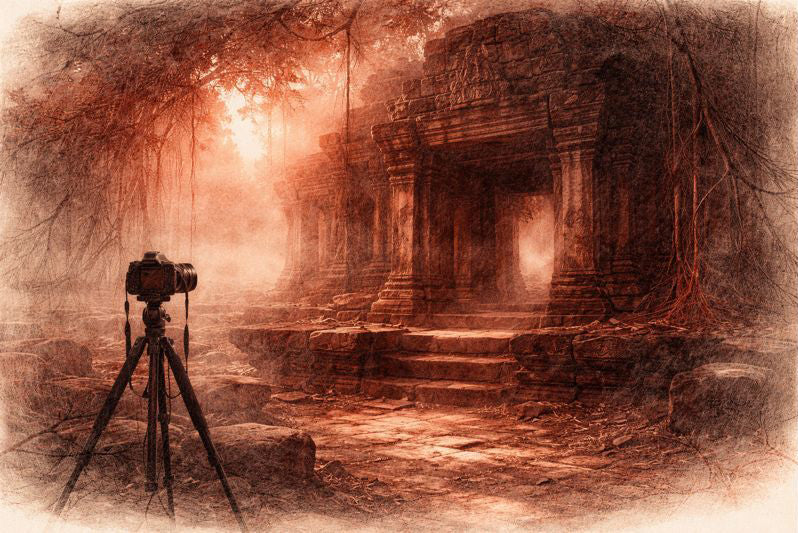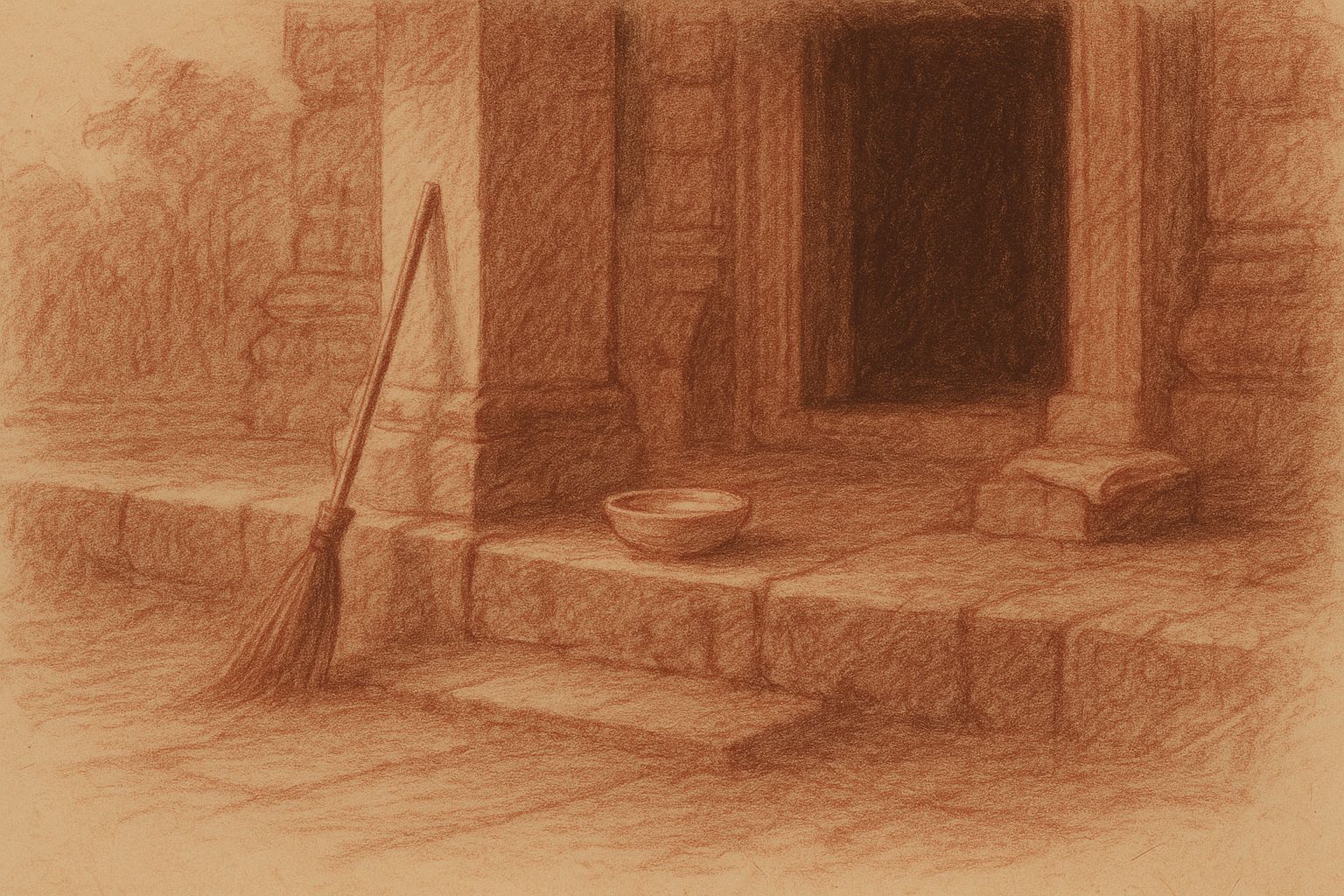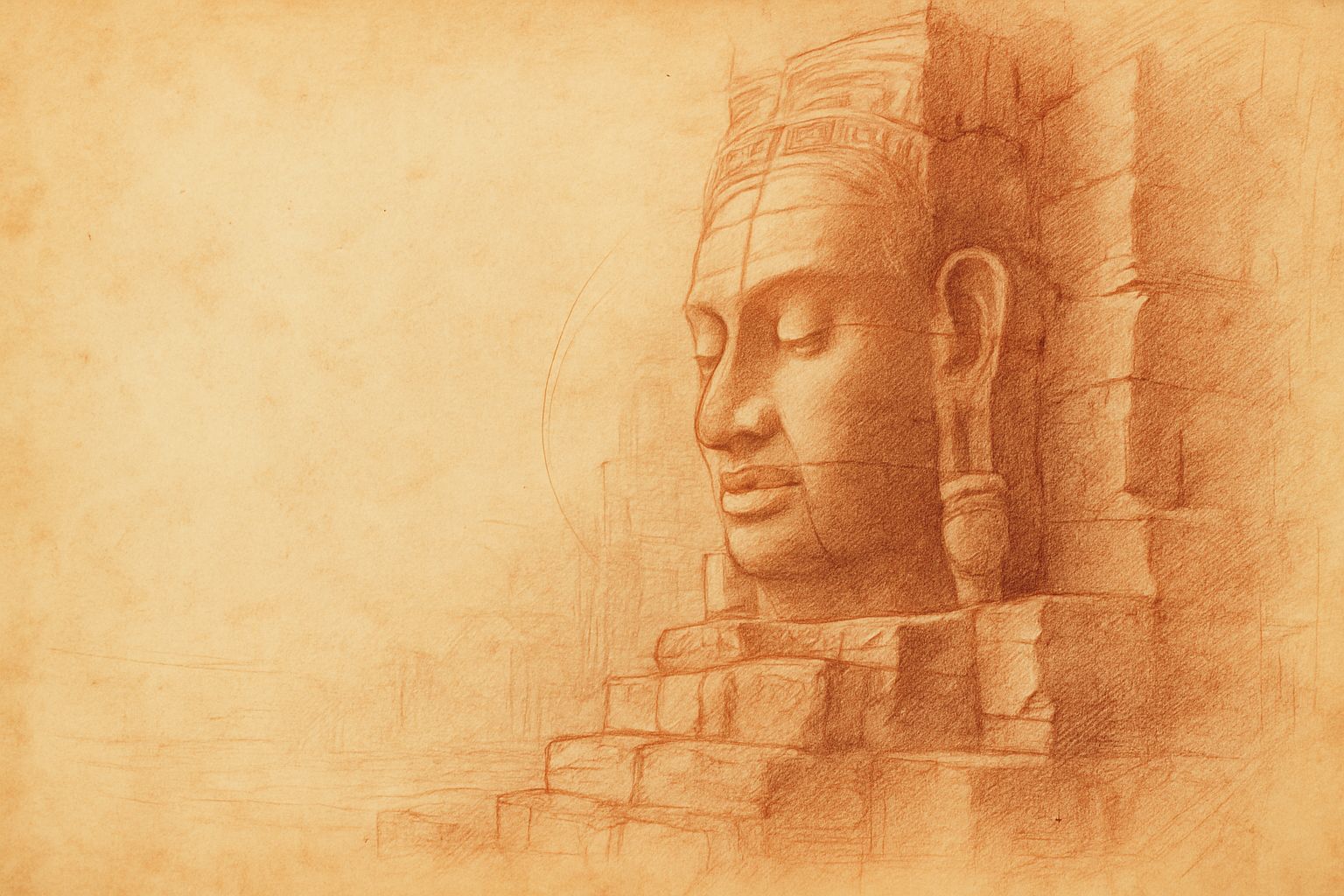Complimentary worldwide shipping on orders over $400 · No import tariffs for most countries
Complimentary worldwide shipping on orders over $400 · No import tariffs for most countries

The Destruction of the Cart and the Asura Trinavarta
2 min read
This morning, we visited Baphuon Temple to examine another relief depicting the early life of Krishna, and the attempts on the child's life by his evil uncle Kamsa.
The Harivamsha tells the tale of how Kamsa sends a demon (asura) named Sakatasura (meaning cart-demon) to take the form of a large hand-cart (sakata) and kill the baby Krishna. Krishna gives a kick to the cart, destroying it and thus killing the demon.
In another tale, this time from the Bhagavata Purana, Kamsa sends the asura Trinavarta to abduct and kill Krishna. Trinavarta takes the form of a whirlwind and carries away the child, enveloping the whole area with a cloud of dust and darkness. The resultant cover of sand particles causes great distress to Krishna’s step-mother Yashoda, who attempts to find her son with the help of the gopis.
The baby Krishna causes himself possess enormous weight, so heavy that the wind comes to a standstill, thus halting the asura in his ascent. Krishna then grasps his captor's throat with intense force, paralysing him and making his eye-sockets bulge. The asura crashes back to earth and is smashed to death upon a rock.
Krishna’s foster-father Nanda and the gopis discover the infant dangling upon the chest of the slain asura, completely unharmed.

Figure 1. The Destruction of the Cart and the Asura Trinavarta, Baphuon Temple, Angkor, Cambodia.
This panel on the southern gopura of enclosure II of Baphuon Temple depicts the baby Krishna crawling out from under a cart to be fed by his step-mother.
The cart on the left seems to hold the dead body of the asura Sakatasura, representing the story of the destruction of the cart, and the tree in the centre that we see bending in the wind is suggestive of the asura Trinavarta's whirlwind. To the right of the tree, we see Krishna’s step-mother Yashoda, sitting devastated at the disappearance of the boy. Yashoda is shown with flabby breasts, thinking of her lost child, as the hungry Krishna reappears in front of her after escaping Trinavarta.
Because of its poor state of preservation, the attribution of the relief shown in Figure 1 may be problematic. It was suggested, before the restoration of Baphuon Temple was completed in 2011, that it may instead represent the scene when the wicked Putana visited the new-born child with the intention of killing him on the order of Kamsa. Transforming herself into a beautiful young woman, she took Krishna in her arms and gave him her poisoned milk. However, the boy sucked her with such force that she died.
If you enjoyed this article, and you would like to continue to share in my adventures, please sign up for my newsletter below. Since I no longer post on social media, this is the best way to stay up-to-date with my work.
Also in Library

Before the Shutter Falls
3 min read
Before the shutter falls, fear sharpens and doubt measures the cost of waiting. In the quiet hours before dawn, the act of not-yet-beginning becomes a discipline of attention. This essay reflects on patience, restraint, and the quiet mercy that arrives when outcome loosens its hold.

Those Who Keep the Way Open — On the Quiet Guardians of Angkor’s Thresholds
3 min read
Quiet gestures shape the way into Angkor — a swept stone, a refilled bowl, a hand steadying a guardian lion. This essay reflects on the unseen custodians whose daily care keeps the thresholds open, revealing how sacredness endures not through stone alone, but through those who tend its meaning.

Multiplicity and Mercy — The Face Towers of Jayavarman VII
5 min read
A new vision of kingship rises at the Bayon: serene faces turned to every horizon, shaping a world where authority is expressed as care. Moving through the terraces, one enters a field of steady, compassionate presence — a landscape where stone, light, and time teach through quiet attention.
Join My Studio Journal
Receive occasional letters from my studio in Siem Reap—offering a glimpse into my creative process, early access to new fine art prints, field notes from the temples of Angkor, exhibition announcements, and reflections on beauty, impermanence, and the spirit of place.
No noise. No clutter. Just quiet inspiration, delivered gently.
Subscribe and stay connected to the unfolding story.

Join My Studio Journal
Receive occasional letters from my studio in Siem Reap—offering a glimpse into my creative process, early access to new fine art prints, field notes from the temples of Angkor, exhibition announcements, and reflections on beauty, impermanence, and the spirit of place.
No noise. No clutter. Just quiet inspiration, delivered gently.
Subscribe and stay connected to the unfolding story.
